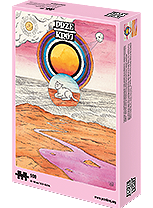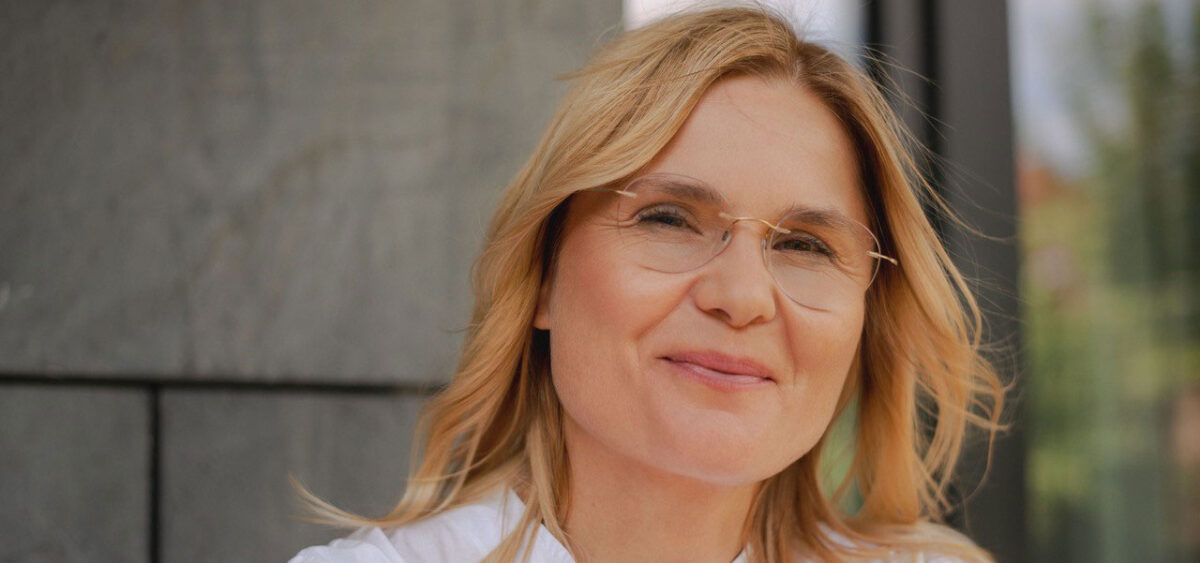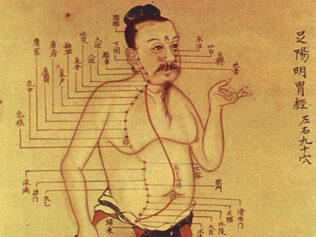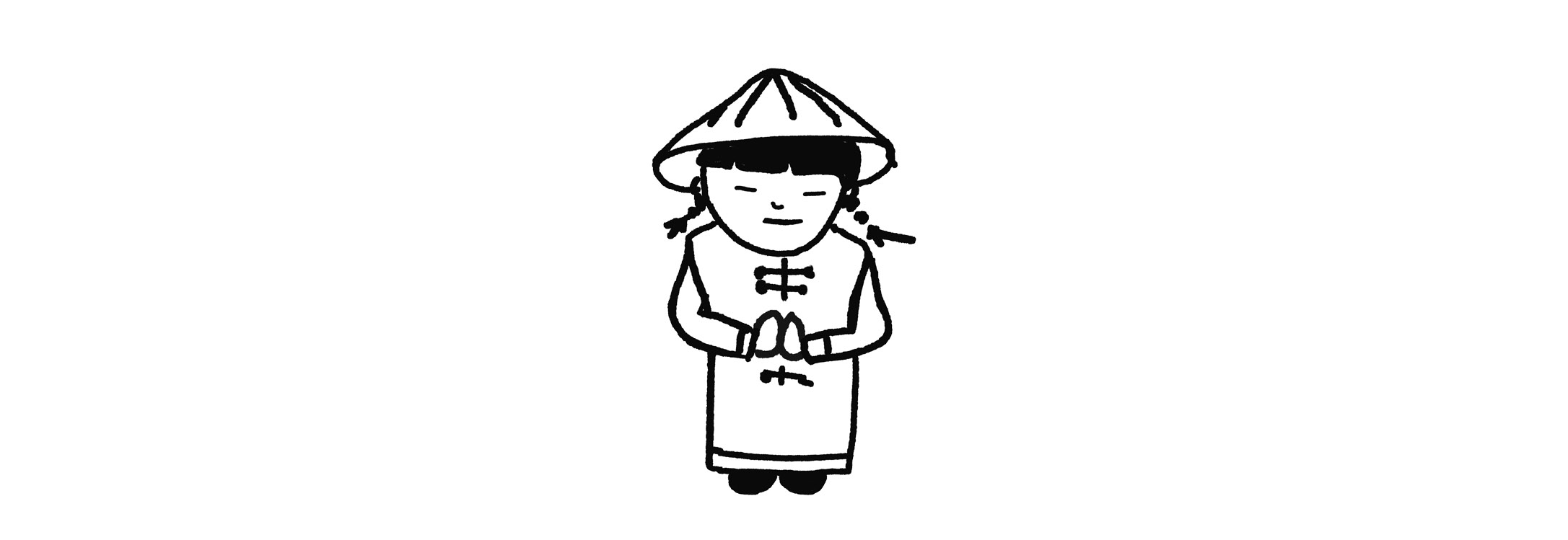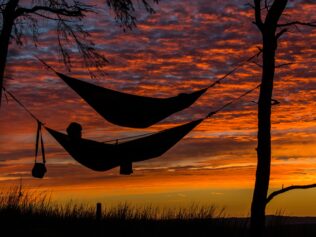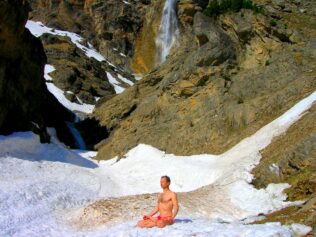
Acupuncture is one of the principal methods of treatment in traditional Chinese medicine. Acupuncturist Izabela Miętka talks about how knowledge from China can aid those living in the West.
Even a single needle can help restore balance to the body—on a physical, emotional, and spiritual level. A seemingly simple puncture contains all the knowledge about the complex network of connections that constitutes the human being.
Agnieszka Rostkowska: Acupuncture is an Eastern healing technique that has been used for over two millennia. How does it fare in relation to the latest scientific research and Western medicine?
Izabela Miętka: Acupuncture is mentioned as early as the fourth century, in the famous Inner Canon of the Yellow Emperor, still recognized today as the fundamental doctrine of traditional Chinese medicine (TCM). The book contains illustrations depicting the tools used before needles—instead of puncturing, particular points on the body were stimulated by way of acupressure, or compression. We still use the Inner Canon… and other classical works. They are translated and annotated—and can thus be understood today—by renowned sinologists, including Elisabeth Rochat de la Vallée, who interprets them, referring to their historical context. TCM is continually developing—today, we need to take into account everything that is going on in Western medicine, including new drugs and procedures, such as those related to improving fertility and the treatment of pain. We also take into account the particulars of different regions. For example, the inhabitants of Nepal live in unheated houses, so when I was there for an internship, I treated patients who were so cold, their tongues had turned purple. But at the same time, their inner peace and emotional balance is pretty much unheard of among people from Western European countries, who are mainly treated for the effects of stress.
Modern Chinese medicine is developing in the direction of complementary medicine, i.e., combining knowledge from the Eastern and Western traditions. In some situations surgery is the only option, but acupuncture can help to prepare the patient.— It can deeply relax their body, including the internal organs, to prevent perforation during the procedure, or reduce stress levels, anxiety, and regulate emotions. During a study visit to a hospital in Haifa, Israel, I watched a team of acupuncturists doing their daily medical round. Together with doctors, they debated whether, for example, nausea resulting from anesthesia following surgery could be treated with acupuncture instead of medication. In China, TCM is taught at universities, and in some hospitals individual floors are assigned to specific treatments, such as herbal medicine, acupuncture, and others.
From what age can one receive acupuncture?
Acupuncture can be performed even on newborns, although we would first try acupressure, e.g., the pediatric massage, Tuina. My youngest patient was a week-old baby—I mostly worked to support his digestive system and his mother, who regularly used acupuncture during pregnancy. I also helped a six-week-old baby who cried almost constantly following a very difficult childbirth. It only took one procedure to calm him down. There is no upper age limit.
Now, let’s be honest: acupuncture can hurt!
It depends on the patient’s attitude and pain threshold. The same acupuncture point can leave one person screaming in pain and another feeling nothing. For women, sensitivity varies with different phases of the menstrual cycle—we are most sensitive a few days before menstruation. Of course, some parts of the body hurt more, such as the fingers. Traditionally, we strive to achieve so-called de qi—i.e., tingling or a “needling response,” but it does not have to be painful or unpleasant. The acupuncturist can adjust the intensity, be gentler, or ask the patient to breathe in as the needle is inserted. Needles—always sterile and disposable—are usually inserted a few millimeters deep. In some parts of the body, such as the calf, abdomen, or—as in the case of sciatica—buttocks, a greater depth is recommended (1-1.5 cm), depending on the thickness of the fat tissue. Needles can be inserted for just a few seconds—this is what we typically practice on children, but some acupuncturists also do this in adults. Most often, however, we leave them in for three or twenty-one minutes—the patient has a chance to lie down peacefully, which is an added value in today’s fast-paced world.
Is the patient always lying down?
No, the procedure can also be performed standing up. Some patients have severe back pain that makes it difficult for them to lie down. When we work with so-called moving points, e.g., when treating a stiff neck or lumbar spine pain, we ask the patient to sit down.
Acupuncture resembles dry needling, one of the popular techniques in Western physiotherapy.
Seemingly, but it’s a completely different technique. Dry needling is based on so-called trigger points, and they are not the same as acupuncture points. Orthopedic acupuncture can relax muscles locally, but acupuncture’s goal is to identify deeper issues. In TCM, we look not only at particular ailments, but also their causes, on three levels: the physical, emotional, and spiritual. There are some acupuncture techniques that use three needles—one for each of these areas. Regardless of which level we focus on, we will move the entire system anyway—according to Chinese medicine, the human body is a network of connections, and the physical level is a mirror of the emotional and spiritual nature. Therefore, Eastern therapists point out that two patients may have exactly the same complaint, but it can have an entirely different cause in each of them, and thus require different treatment. When diagnosing the patient, a TCM therapist always looks into their eyes to see whether there’s a sparkle, a glint. Or on the contrary: are they absent, with eyes so sad that it is clear they can barely function? The Chinese also say that Shen is a look behind the eyes.
This is an important term in Chinese medicine, but it is hard to find a definition.
In English, Shen is most often translated as spirit. The Chinese believe that in order for a new person to appear, Shen must merge with Jing, or, to put it simply, with the physical body. They compare Shen to an emperor who manages the body and all its processes. They also say that Shen resides in the heart: the heart is the emperor’s palace, and it is really important that the heart is empty.
Empty? Not full of love?
Shen itself is full of love, understood not as falling in love, but as universal love, full of trust and desire to do good. This emptiness does not mean a lack of love or lack of emotions, but rather being careful not to bottle up any emotions for too long, to let them flow and pass. Chinese medicine associates specific emotions with individual organs, e.g., anger with the liver, anxiety with the kidneys, sadness with the lungs. When we lose someone close to us, we may experience a cough—short and intense, or chronic, sometimes lasting several months—not because we caught a cold at the funeral, but because there is despair and sorrow in our lungs. Ultimately, however, all emotions touch the heart. If the heart is constantly full of emotions, we lose our balance. So, it’s important not to suppress them, but to clean them out, give them an outlet, and tidy up the emperor’s palace—sometimes this means crying, sometimes talking to someone, and sometimes going for a walk.
The heart needs to have room for Shen—i.e., for ourselves. Because according to TCM, a person is a microsystem that is part of a macrosystem, Shen is also rooted within a larger order. Today, however, we often forget about this. We believe that so much depends just on us, on the individual, and yet our paths are interconnected. Normally, we intuitively know, feel, and follow our own path, and do something that is “ours.” When we deviate from this path, the body alerts us by sending signals in the form of specific health complaints, and acupuncture at the Shen level can be helpful. The same is true for difficult experiences and traumas, for example, an accident, or the death of a loved one. In this way, all aspects—physical, emotional, and spiritual—are interconnected. Our task as TCM therapists is to see the beginning of this puzzle.
How do you do that? What is the diagnosis process?
When a patient enters our office, we look into their eyes, examine their posture and the structure of their entire body—whether it is nourished, hydrated, tense, or relaxed. Then we listen to what they tell us about their wellbeing, the complaints and symptoms they’re experiencing. Then we check the pulse: its quality, whether it is faster or slower, empty or full. An empty (i.e., weak) pulse is often related to so-called blood deficiency, which can show as anemia on blood tests. Meanwhile, a full pulse can be tense, e.g., as a result of stress or the body fighting an infection. Later, we examine the patient’s tongue. We look at its thickness, shape, color, and what kind of coating it has. This can signal, among other things, gastrointestinal disorders or sinus problems. Based on such a diagnosis, we select the channels—the so-called meridians, where qi, or life energy, flows—and the specific points that we will puncture.
How many do we have?
We have twelve main channels and 365 points. Meridians all differ, for example, in length. The longest is the bladder channel, which begins in the corner of the eye, runs through the head, neck, and entire back, along the back of the leg, and down to the little toe. On this channel alone, there are sixty-seven points. Not all of them relate to the bladder, some are linked to other organs. The gallbladder and stomach channels are of similar length. But there are also some short channels, such as the heart channel that starts under the armpit and runs down to the hand, ending on the little finger. We rarely use this meridian, however, because it would be like touching Shen. Even the oldest books on TCM note that treating the emperor requires an exceptionally specialized doctor.
So, can we restore the proper flow of energy, qi, and balance in individual organs by puncturing particular channels?
In short—yes, and this is also related to the so-called Chinese body clock. Chinese medicine assumes that each of the meridians is active for two hours per day. This process begins in the lung vessel—between 3:00 a.m. and 5:00 a.m. This explains why patients in pulmonology departments tend to cough heavily around this time. Then—between 5:00 a.m. and 7:00 a.m.—the colon and the large intestine is at its peak, which is why this is the best time to get up and use the toilet. Between 7:00 a.m. and 9:00 a.m. is the optimal time for breakfast, with the stomach at its best. Between 9:00 a.m. and 11:00 a.m. is the time of spleen, which—in addition to its physiological functions—is associated with intellectual activity, so this is a good time for an exam or a job interview. Between 11:00 a.m. and 1:00 p.m., there is a peak in cardiac activity. The next two hours are the time of the small intestine, which is the organ that decides which elements are absorbed and which are not—and in a broader sense, what is good for us and what is not—so it is the best time to make all decisions. Between 3:00 p.m. and 5:00 p.m. is the time of the bladder, and between 5:00 p.m. and 7:00 p.m. it’s the time of—the kidneys. Because they are associated with fear, at this time our wellbeing may deteriorate. At 7:00 p.m., the time of the pericardium begins, which is responsible for our relationships with others, so it is a good time for a date or meeting with friends. Then, between 9:00 p.m. and 11:00 p.m., it’s the time of the triple burner, which is not so much an organ, but rather a network of connections throughout the body related to water metabolism and thermoregulation. This is also the best time to go to bed, because from 11:00 p.m. to 1:00 a.m. the gallbladder is at its peak, which may make it difficult to fall asleep. The liver, most active between 1:00 a.m. and 3:00 a.m., closes the cycle. If we have some pent-up frustration and anger, we may wake up during this period. When one organ fails to function properly, the entire cycle is disrupted.
Is this clock based on movement, the flow of qi?
Yes. For centuries, this flow has been depicted in Chinese anatomical engravings: they show man in a standing position with his hands raised upwards. In this way, he is symbolically depicted as living between the earth, or yin, and the sky—yang, i.e., two different qualities between which movement flows. Yin and yang are two poles striving for balance, and at the same time there is a kind of play going on between them. The twelve major meridians are also divided between yin and yang. Looking at this figure, we can see that the yin meridians originate in the lower parts of the body and the energy flows upwards, while the yang meridians originate in the upper parts of the body, the fingers, and the energy flows downwards. At the tips of the fingers and toes, the direction of the flow changes, and it all boils down to a balance between yin and yang.
According to some, by nature, women are more yin and men—yang.
Yes, but everyone has both of these elements in them. The Chinese compare this to two sides of a hill: yin is in the shade, and yang is in the sun. Nowadays, women might find it difficult to fully realize their yin potential, because, for example, they need to compete with men at work. Acupuncture can support the yin element, and this is particularly important if a woman is trying to conceive. Similarly, acupuncture can help men to improve the strength of their yang. Yang that functions properly always strives to take care of yin and to serve as its sun. I treat couples trying to conceive together—it brings them closer and helps them connect. Of course, I diagnose them separately, because both need to restore their balance as individuals, and the yin and yang phases fluctuate throughout the menstrual cycle.
Organs are also divided according to yin and yang.
Yin organs are those whose function is associated with storage. The liver stores blood, and the kidneys store essence (also called “essential qi”)—a kind of energy base inherited from our parents, which we replenish daily with nutritious food and good-quality sleep. Yang organs, on the other hand, are associated with activity, action. In TCM, we also say that they like to be empty—the stomach digests food and waits in readiness for the next action. But there are also organs that combine the yin and yang functions—we call them “extraordinary.” These include, for example, the gallbladder, which both stores and produces bile, as well as the uterus, blood vessels, bones, and brain. We also have “extraordinary” channels, i.e., the eight meridians that were created first and give rise to all others. They can be used for so-called unusual regulations, i.e., acupuncture treatments that are performed rarely, in particularly exceptional situations. One example is the Chong Mai channels through which we can restore the “factory settings” of the body—that is, remind it how it all worked before it became imbalanced. We should remember that our body has many ways of self-regulating.
Can acupuncture help animals?
Of course, there are entire atlases devoted to acupuncture for dogs and cats. But it is not limited to pets—it works perfectly, for example, in horses. A vet I know used acupuncture to “fix” a hedgehog that couldn’t walk.
There’s also something that we might call “takeout acupuncture.”
These are small patches to which a millimeter-long needle is attached. They are intended for the ears, because there are some microsystems in acupuncture in which we only puncture, for example, the ear. But if they can somehow prolong the effects of the administered treatment (e.g., in the case of a cough) they can also be attached to other parts of the body. You wear them for a day or two, sometimes a few days; they are imperceptible, so you can walk with them or even play sports. They are used occasionally and should be administered by a therapist.
Beyond acupuncture, how can we take care of ourselves in the spring?
Spring is a good time to cleanse the body. TCM associates this time with the liver and gallbladder—different organs are also assigned to each of the seasons. The functioning of these organs can be enhanced by a three-day detox—for example, only eating vegetables. It’s also worth taking advantage of the sprouts that appear in spring, e.g., by adding them to soups or other warm foods.
TCM encourages us to eat cooked foods at any time of the year, because it supports our digestive system by easing digestion. In winter, we intuitively eat more warm dishes such as soup; we also warm up with spices such as cinnamon or ginger. However, this can lead to the overheating of our digestive system—known as “heat buildup” in TCM. Green spring vegetables, such as spinach or lettuce, can “pull out” this excess heat, cleanse, and strengthen our body. Typically, as we get closer to summer, we eat more cold foods—cold drinks, ice cream—that weaken our digestive and immune systems. It is worth noting that people in the warmest Middle Eastern countries drink hot mint tea to cool down in the heat! According to TCM, summer is the time when we should accumulate heat in the body, so that in fall and winter we don’t get cold and sick. The key is to take care of our internal balance all year round, so that we do not have to use acupuncture, and only use it prophylactically or on an ad hoc basis. In the Chinese tradition, spring is the time of hope, distant horizons, and unbound possibilities. It’s worth taking advantage of!
Parts of this interview have been edited and condensed for clarity and brevity.
Izabela Miętka:
Philosopher and sociologist, traditional Chinese medicine therapist, and acupuncturist. Graduate of the Avicenna Institute, she has trained in, among others, Nepal, Israel, and Germany. Lecturer at the International Congresses of Chinese Medicine (Cambridge, Graz, Kraków).

